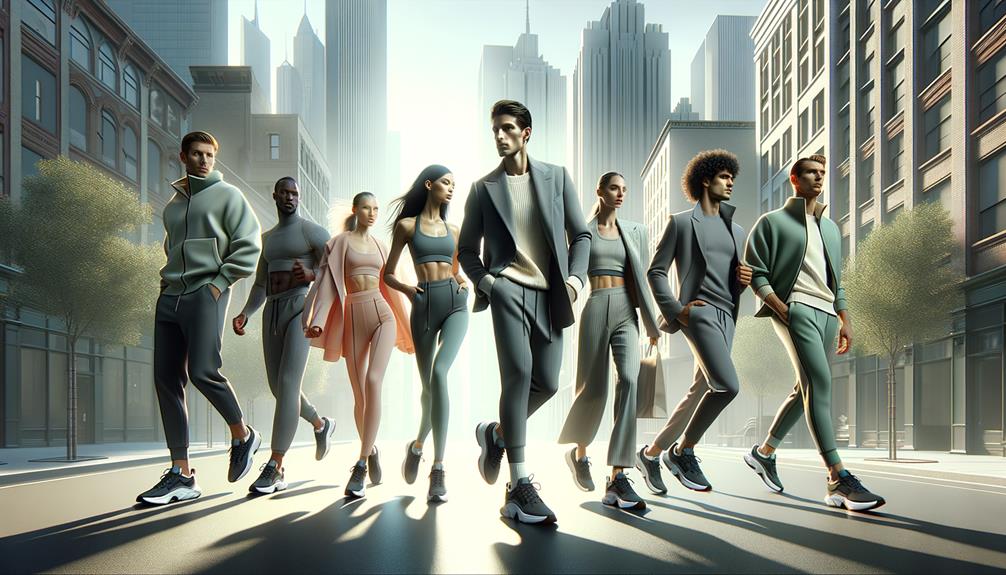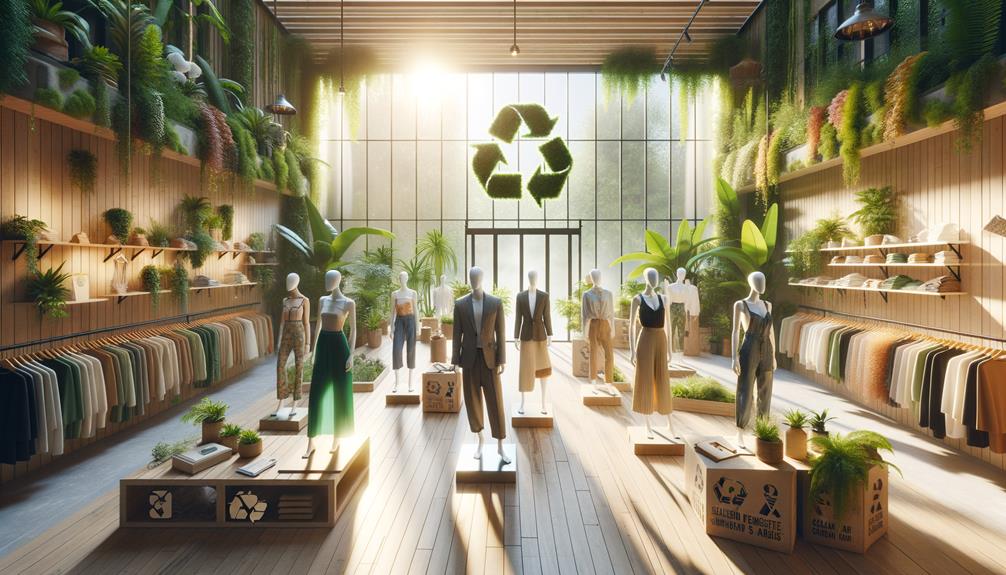Social media has fundamentally reshaped fashion trends, with influencers now playing a pivotal role in the industry. Platforms like Instagram and TikTok have accelerated the emergence of trends, leading to rapid cycles that can sometimes feel overwhelming. Brands now actively collaborate with influential figures, democratizing fashion and fostering innovation. However, this has also contributed to the rise of fast fashion, raising sustainability concerns.
At the same time, social media has brought more diversity to the fashion landscape, showcasing a broader range of body types and cultural backgrounds. Consumers now enjoy a more interactive and personalized relationship with brands, constantly influencing each other's choices. It's a fascinating dynamic, with both advantages and challenges that deserve further exploration.
Rise of Fashion Influencers
The rise of fashion influencers has transformed the industry by empowering everyday individuals to shape fashion trends through social media. Platforms like Instagram, TikTok, and YouTube have become hubs for these tastemakers, who captivate audiences with their unique personal style and creative content.
Fashion brands now actively seek collaborations and endorsements from influencers, recognizing their ability to sway consumer behavior. Instead of relying solely on traditional gatekeepers like fashion editors or runway shows, consumers increasingly look to influencers for inspiration and guidance. This shift has broadened the scope of fashion leadership and made it more accessible to diverse voices.
The speed at which an influencer's post can drive a new trend or revive an old one demonstrates the power of social media. It's a dynamic interplay where influencers and their followers continuously redefine fashion trends in real-time. By building dedicated communities around their personal style, these influencers have fundamentally changed how we engage with and perceive fashion in the digital age.
Accelerated Trend Lifecycles
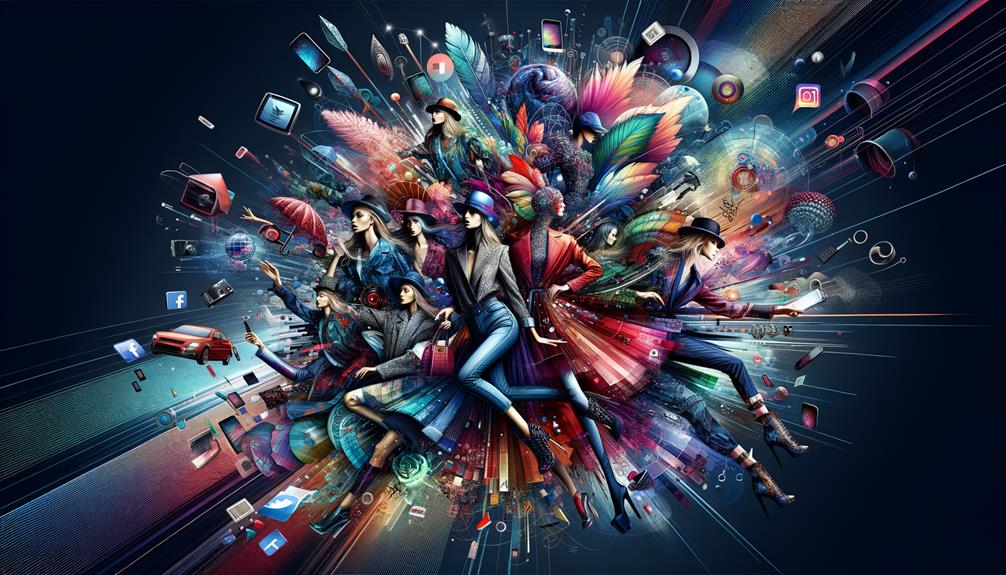
Social media's relentless pace has shrunk the lifespan of fashion trends to just months, compelling us to constantly update our wardrobes. I've noticed how platforms like Instagram and TikTok make fashion incredibly fast-paced. Influencers and viral content mean that what's trendy today could be out of style tomorrow.
Here's how this accelerated trend cycle manifests:
- Rapid Trend Emergence: New trends can emerge overnight, thanks to influencers and viral challenges. It's thrilling but also exhausting to keep up.
- Fast Fashion's Role: Retailers quickly replicate these trends, ensuring styles hit the market within weeks. This speed fuels the cycle even more.
- Real-Time Sharing: With real-time content, we're exposed to global trends instantly. It's a double-edged sword, giving us more choices but also overwhelming us.
- Increased Consumption: The pressure to stay on-trend leads to overconsumption and waste. Our constant desire to innovate our wardrobes contributes to this unsustainable cycle.
The fashion industry's rapid adaptation to social media-driven trend lifecycles is both fascinating and concerning. It underscores a need for balance between embracing innovation and promoting sustainability. We must question how this pace affects our personal style choices and the environment.
Brand Collaborations
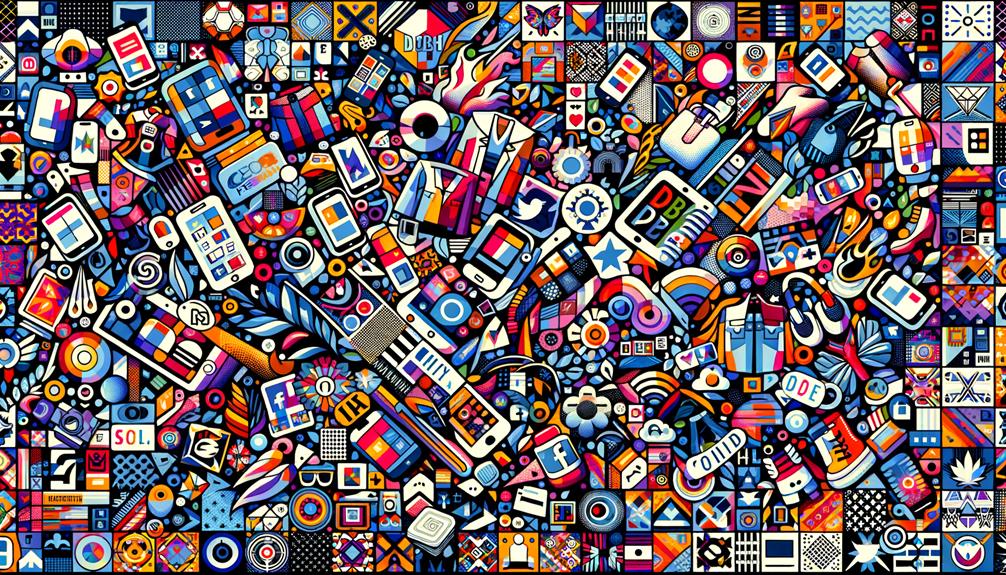
I've noticed that fashion brands are increasingly collaborating with social media influencers as a key strategy for boosting visibility and sales. These influencers, including fashion bloggers, have built large, loyal followings on platforms like Instagram and TikTok. When brands team up with them, they're able to tap into an already-engaged audience that trusts the influencer's style and recommendations.
These collaborations go beyond just slapping a logo on a product. They blend the creative visions of the brand and the influencer, resulting in unique collections and outfit ideas that feel fresh and exciting to consumers. It's not just about promotion – the partnerships allow for truly innovative designs that resonate with shoppers.
What's interesting is how social media has democratized fashion. It's no longer solely dictated by elite designers; everyday people with a flair for style are now shaping trends and bringing more diversity to the industry. This shift has made fashion more accessible and inclusive than ever before.
Sustainability Concerns
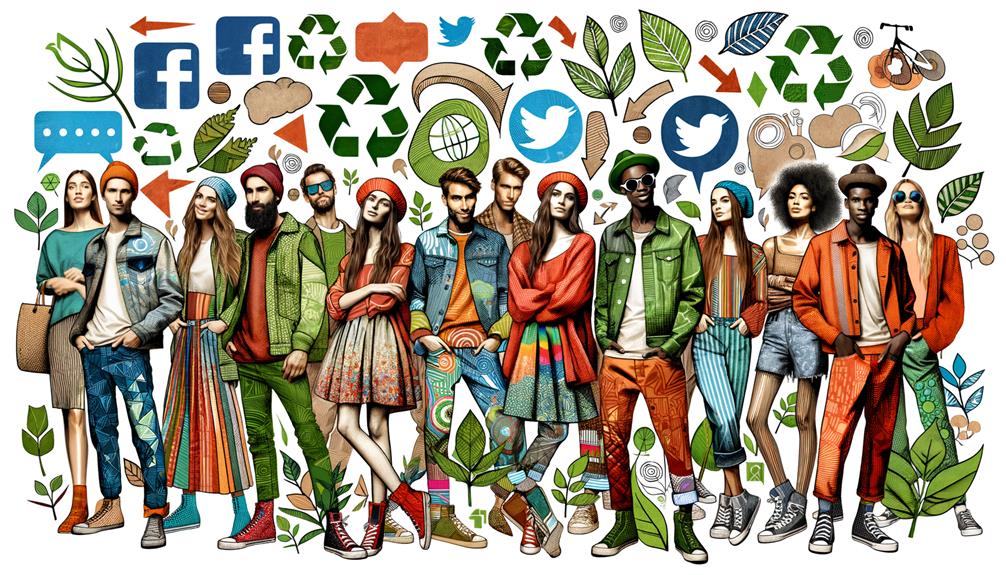
As fashion brands work with influencers to shape trends, I've noticed an alarming rise in fast fashion and its environmental impact. Social media often drives consumers towards quick, disposable fashion choices that contribute to massive waste. It's concerning to see how platforms like TikTok encourage overconsumption, with users frequently showcasing cheap, low-quality clothing hauls.
This raises serious sustainability concerns:
- Environmental Waste: The growth of fast fashion is leading to more waste, with clothes often discarded after just a few uses.
- Unsustainable Production: Many fashion items are produced in ways that harm the environment, using toxic dyes and non-biodegradable materials.
- Consumer Influence: While 67% of consumers trust influencers for ethical recommendations, many influencers still promote unsustainable brands.
- Demand for Change: 73% of Gen Z are willing to pay more for sustainable fashion, indicating a clear market demand for eco-friendly options.
Some brands are using social media to highlight their sustainability efforts, which is a step in the right direction. Transparency about environmental impact is becoming more valued, and it's crucial for influencers to promote sustainable fashion trends. We need to shift our focus towards fashion that not only looks good but also does good for the planet.
Increased Diversity
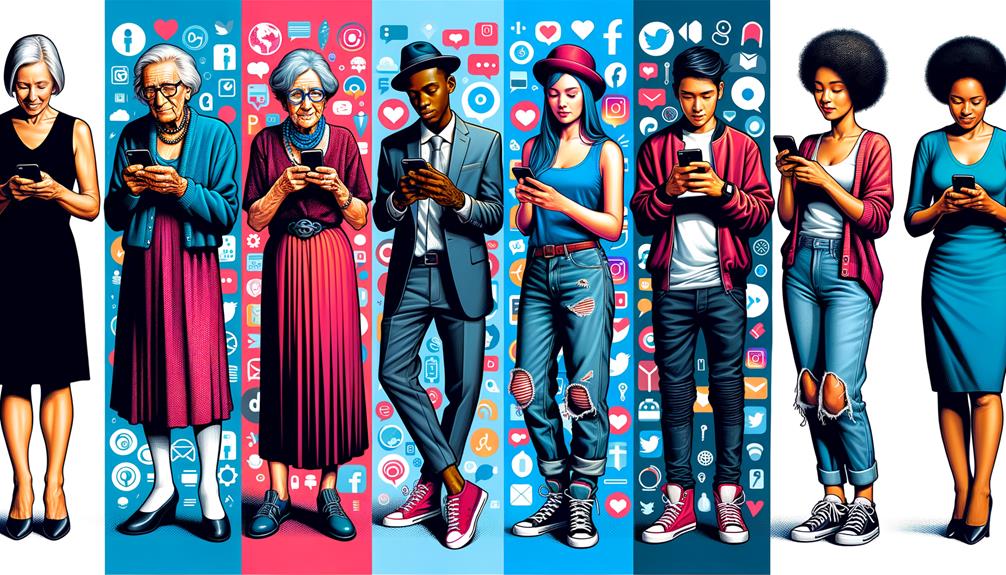
On platforms like Instagram and TikTok, I've noticed a significant shift towards celebrating diverse body types, skin tones, and cultural backgrounds, which is reshaping the fashion industry's standards. This heightened representation on social media is empowering individuals from all walks of life to share their unique fashion styles and perspectives, challenging traditional notions of beauty and style.
These platforms have become a stage for marginalized communities to showcase their fashion innovation, fostering a more inclusive and equitable fashion landscape. Algorithms on these platforms are also evolving, prioritizing content that features a wider range of body types, skin tones, and cultural backgrounds. This democratization of fashion is not just a trend; it's a movement towards lasting inclusivity.
Fashion brands are taking note, becoming more responsive to consumer demands for diverse and inclusive imagery. They're collaborating with influencers from underrepresented groups to promote their products, making inclusivity a cornerstone of their marketing strategies. By doing so, they're not just responding to social media trends but actively shaping a more representative future for fashion. This shift towards greater diversity and inclusivity is a significant change in the fashion industry.
Changing Consumer Behavior
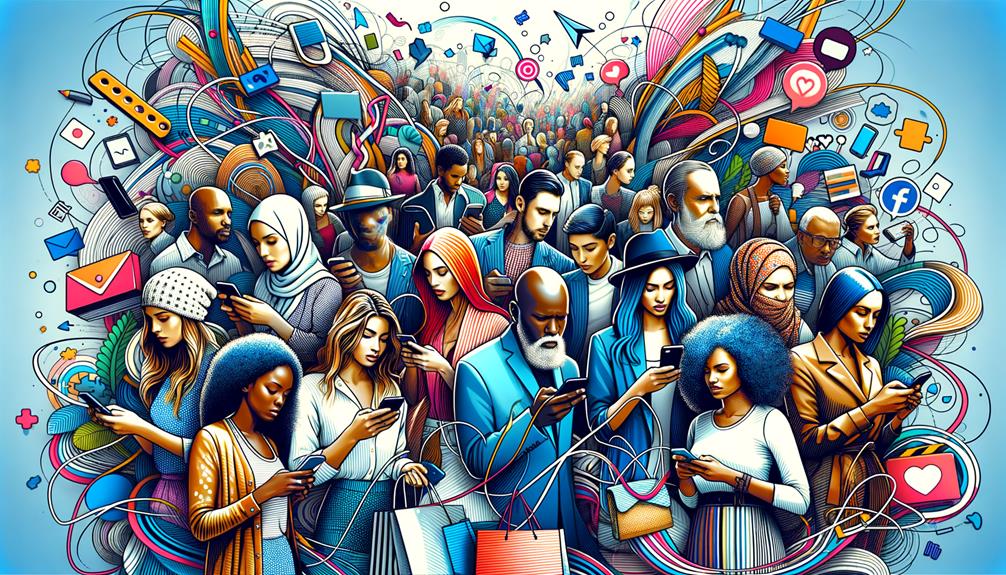
Scrolling through social media, it's clear that consumers now have more power to shape fashion trends directly. This shift, driven by social platforms, is transforming the fashion industry.
- Product Discovery: Social media makes it easy for people to quickly find new fashion items, often leading to viral trends.
- Brand-Consumer Relationship: Direct communication between brands and customers on social media has fostered a more interactive and personalized connection.
- Customer Feedback: Real-time feedback on social media allows brands to accurately gauge market needs and tailor their products accordingly.
- Digital Trends: The constant evolution of social media trends influences consumer preferences and purchasing habits, keeping fashion dynamic and adaptable.
The brand-consumer relationship has become more symbiotic. Consumers no longer just follow trends; they actively create and shape them through their interactions and feedback. This continuous loop of engagement and response ensures fashion brands stay attuned to their audience's desires, making social media an essential tool for navigating the ever-changing fashion landscape.
Frequently Asked Questions
How Did Social Media Influence Fashion Trends?
Social media has had a big impact on fashion trends. It's opened up style to everyone, letting individuals set trends and influence fashion on a global scale. Visual platforms like Instagram drive consumer behavior, making it easy to discover and shop the latest looks.
How Does Social Media Influence Trends?
Social media plays a significant role in shaping trends. The algorithms used by these platforms amplify viral content, making high-engagement posts more visible to users. Influencers, who have built large followings, also wield considerable power in driving trends. The seamless integration of e-commerce capabilities on social media further accelerates the adoption of new styles, revolutionizing how people discover and purchase fashion and other products.
How Is Social Media Influencing Fast Fashion?
Social media's rapid trend cycles are driving fast fashion's unsustainable production pace. I've noticed influencers constantly promoting new looks, creating a demand for cheap, trendy clothes. This never-ending consumption clearly isn't sustainable, either environmentally or ethically.
How Do Social Factors Influence Fashion Change?
70% of fashion consumers consider social factors in their clothing choices. Cultural shifts, economic conditions, and celebrity influences constantly reshape fashion trends, making the industry a dynamic reflection of our evolving society. For example, the rise of sustainable fashion has been driven by growing environmental concerns among consumers. Similarly, the pandemic has influenced a shift towards more comfortable, casual styles as people spend more time at home. Celebrities also play a significant role in popularizing certain looks, leading their fans to emulate their style choices. Fashion is a constantly changing landscape, responding to the social currents that shape our world.
Conclusion
Reflecting on how social media has completely reshaped the fashion industry, it's incredible to see how influencers have essentially become the new fashion authorities, dictating trends with a simple post. We've witnessed trends surge and fade at an unprecedented pace, brand collaborations that feel almost cosmic, and a growing fixation on sustainability. Our social media feeds are a vibrant mosaic of diversity, dramatically shifting consumer behaviors like never before. The fashion landscape has transformed so dramatically, it's almost as if we're perpetually on a catwalk.



